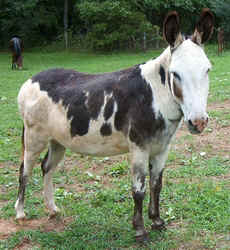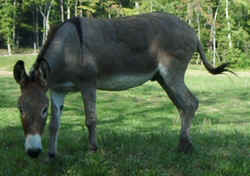 |
 |
Donkeys
 |
 |
The exact origin of the domestic donkey is vague, but it is believed to have come from the Nubian subspecies of African Wild Ass. It was the backbone of ancient nomadic and pastoral peoples of the world, and it is still indispensable in many countries. The donkey's earliest records are from Ancient Egypt, where it was kept in large herds. From there it spread to all corners of the globe to become a beast of burden, an aid in the planting and reaping of harvests, a dairy animal and a source of food. Donkeys vary greatly depending on different uses, a testament to their long history with humans. It is possible to find feral donkeys -- or burros as they are often called -- in many parts of the world. Description: Donkeys are small and wiry, with huge ears and large wedge-shaped heads; mane dark, short and erect, with dorsal stripe continuing down back to tail; back long and withers prominent, often with a vertical bar across them; neck short, with upright shoulders; legs short and strong; hooves narrow and small; color most commonly gray-dun, with a white muzzle and eye circle, black points and dorsal stripe with shoulder bar and zebra striping on legs. Black, brown, red, white and spotted donkeys are also seen. [Grove, Kindrie, Field Guide to Horses, Lone Pine Publishing, Edmonton, Alberta, 1998]
Horses * Horse Books * Mules * Nature Lovers